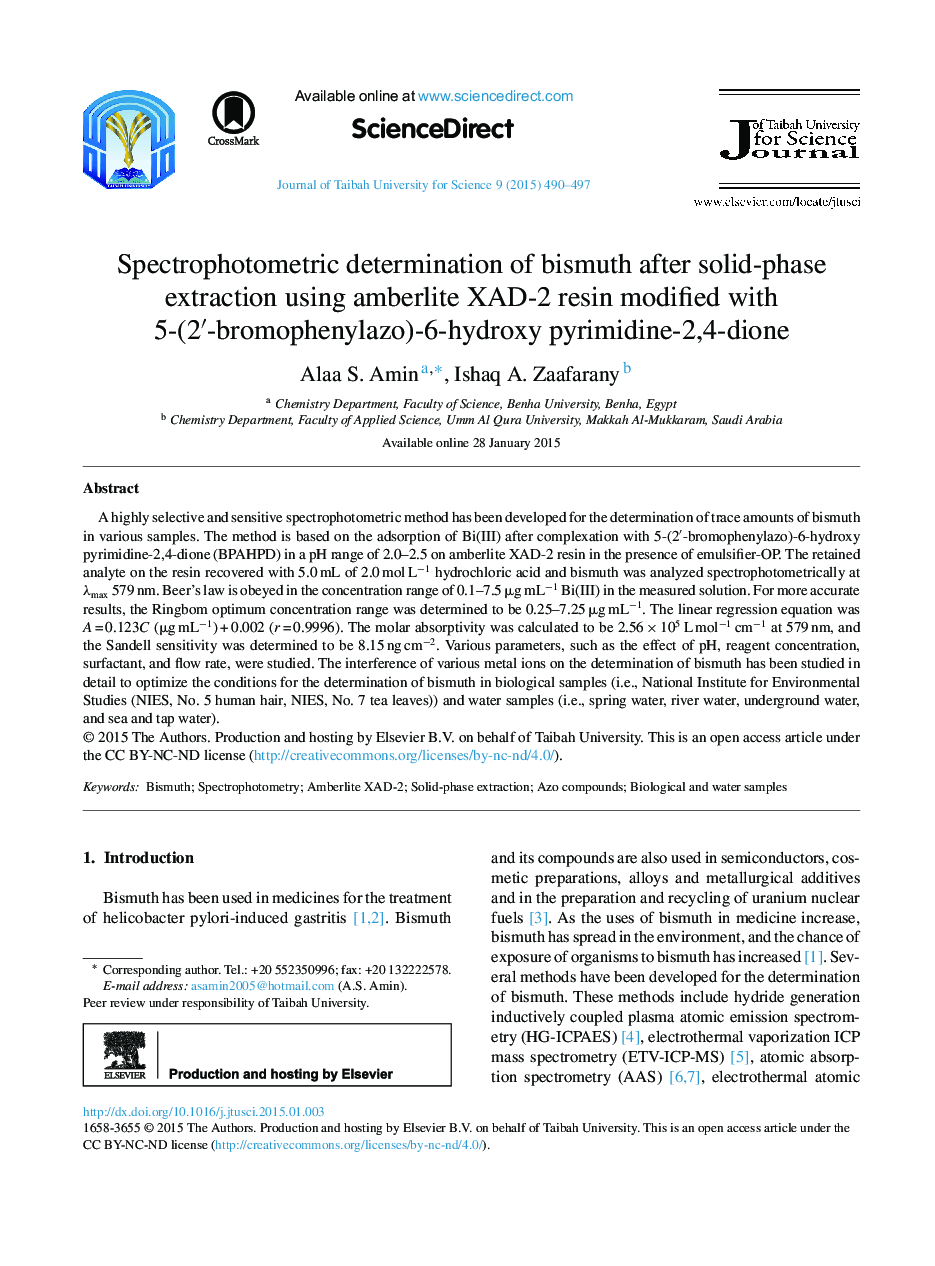| Article ID | Journal | Published Year | Pages | File Type |
|---|---|---|---|---|
| 1260737 | Journal of Taibah University for Science | 2015 | 8 Pages |
A highly selective and sensitive spectrophotometric method has been developed for the determination of trace amounts of bismuth in various samples. The method is based on the adsorption of Bi(III) after complexation with 5-(2′-bromophenylazo)-6-hydroxy pyrimidine-2,4-dione (BPAHPD) in a pH range of 2.0–2.5 on amberlite XAD-2 resin in the presence of emulsifier-OP. The retained analyte on the resin recovered with 5.0 mL of 2.0 mol L−1 hydrochloric acid and bismuth was analyzed spectrophotometrically at λmax 579 nm. Beer's law is obeyed in the concentration range of 0.1–7.5 μg mL−1 Bi(III) in the measured solution. For more accurate results, the Ringbom optimum concentration range was determined to be 0.25–7.25 μg mL−1. The linear regression equation was A = 0.123C (μg mL−1) + 0.002 (r = 0.9996). The molar absorptivity was calculated to be 2.56 × 105 L mol−1 cm−1 at 579 nm, and the Sandell sensitivity was determined to be 8.15 ng cm−2. Various parameters, such as the effect of pH, reagent concentration, surfactant, and flow rate, were studied. The interference of various metal ions on the determination of bismuth has been studied in detail to optimize the conditions for the determination of bismuth in biological samples (i.e., National Institute for Environmental Studies (NIES, No. 5 human hair, NIES, No. 7 tea leaves)) and water samples (i.e., spring water, river water, underground water, and sea and tap water).
